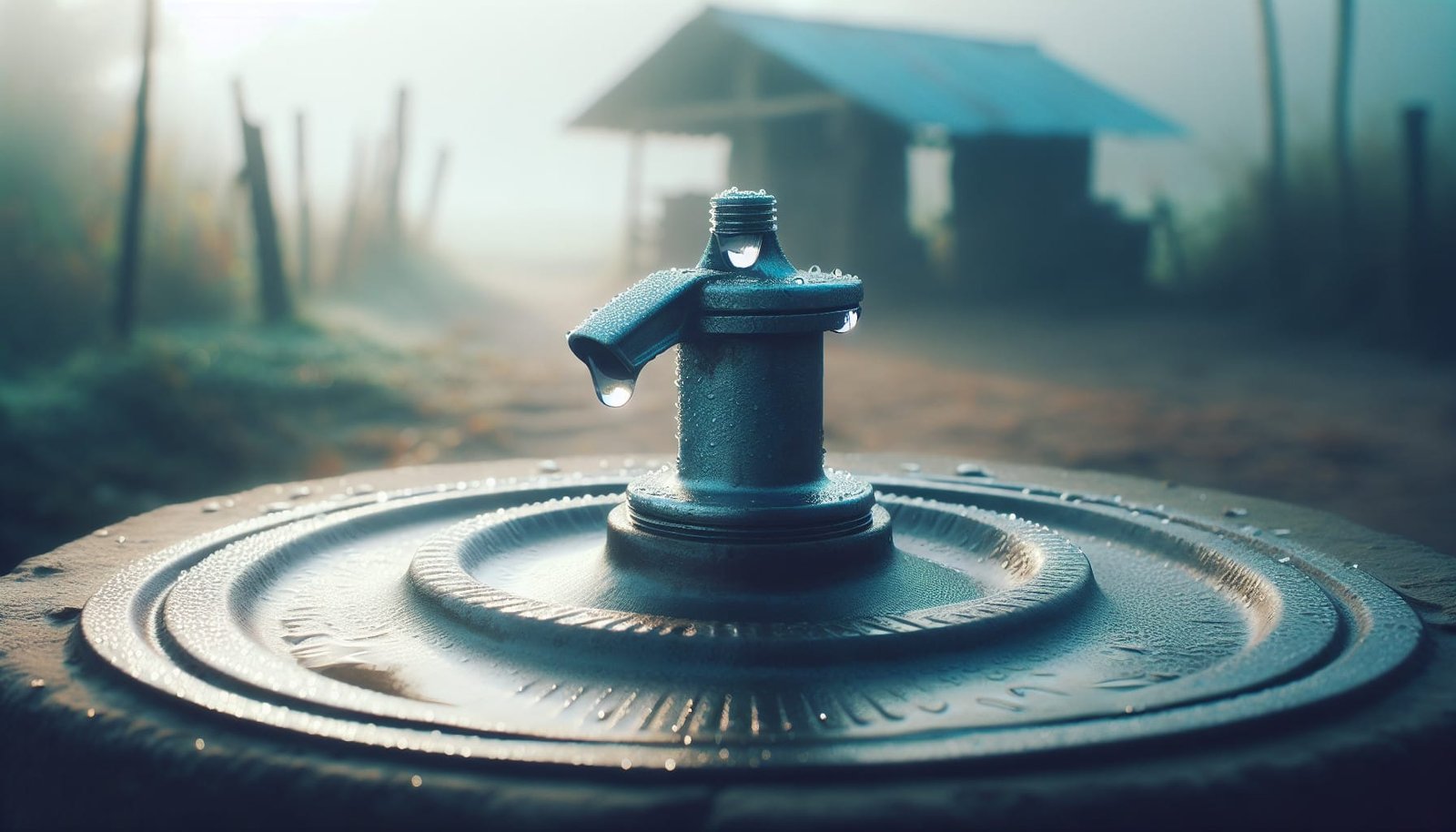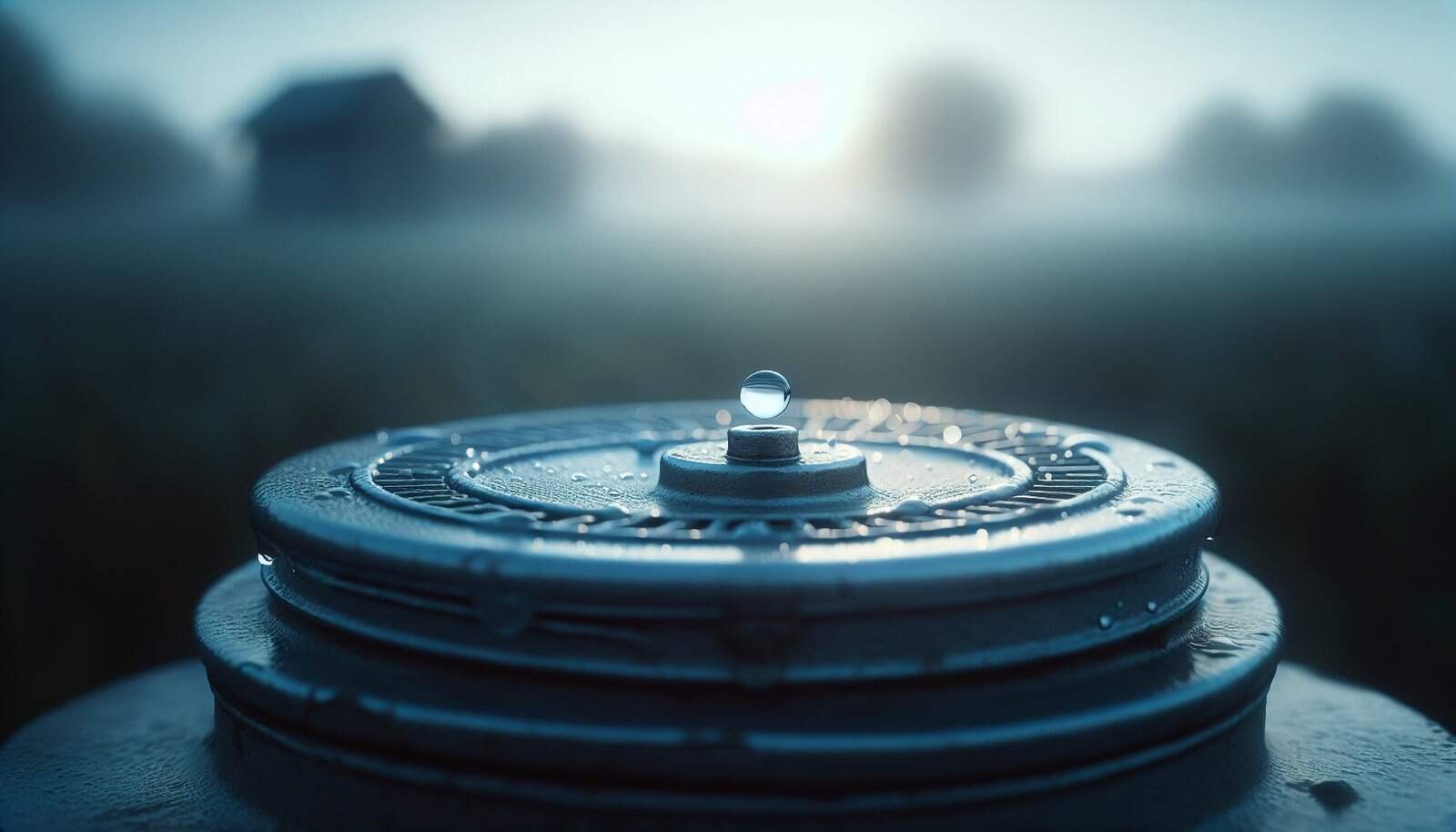Concerned that your well water may be unsafe or unsure how to restore it after a problem?

How Do I Disinfect My Well Water?
You rely on your well for your household water, and when contamination happens you need clear, actionable steps to make your water safe again. This guide explains how to disinfect your well water, how to test to confirm safety, and how to protect your well during power outages so your supply remains reliable.
Why You Might Need to Disinfect Your Well
You may need to disinfect your well if you suspect bacterial contamination, have had flooding, completed well repairs or maintenance, or detected unusual tastes, odors, or cloudiness. Bacteria like coliform and E. coli can make you ill, so taking action quickly is important.
Common Causes of Well Contamination
Understanding common causes helps you prevent contamination. Issues include surface water intrusion after heavy rain or flooding, faulty well caps or casings, nearby septic system failures, and cracked or poorly sealed well components.
Signs That Your Well Water May Be Contaminated
You’ll notice several indicators if your well water is contaminated: cloudy or discolored water, odd tastes or odors (like rotten eggs or chlorine), sudden changes in water pressure, or gastrointestinal illness among household members after drinking the water. Any of these signs warrant immediate testing and likely disinfection.
When to Call a Professional
If you find E. coli in tests, suspect chemical contamination, encounter structural well damage, or feel uncertain about performing disinfection safely, you should call a licensed well contractor or water treatment professional. They’ll have the equipment and experience to handle complex or potentially dangerous situations.
Types of Contaminants and How Disinfection Helps
Different contaminants require different approaches. Disinfection targets biological contaminants (bacteria, viruses, protozoa) but won’t remove chemical pollutants like nitrates, heavy metals, or petroleum. If chemical contamination is suspected, you must identify the contaminant and use appropriate treatment or source protection measures.
Testing Your Well Water Before Disinfection
You should test for total coliform bacteria and E. coli before disinfecting to document the problem. Collect samples following local lab instructions, and avoid using disinfectants prior to initial tests because that can mask contamination. A baseline test also helps you confirm the success of your disinfection later.
Overview of Disinfection Methods
There are several ways to disinfect well water. Some are one-time treatments; others provide continuous protection. Below is a comparison to help you choose.
| Method | What it treats best | Typical use | Pros | Cons |
|---|---|---|---|---|
| Shock chlorination (bleach) | Bacteria, some viruses | One-time or periodic sanitation | Inexpensive, effective for bacteria, DIY possible | Doesn’t treat chemicals; needs flushing; odor; careful handling |
| Continuous chlorination | Bacteria, some viruses | Ongoing protection | Maintains residual disinfectant; effective against recontamination | Requires equipment, monitoring of chlorine residual; tastes/odors |
| UV disinfection | Bacteria, viruses, protozoa | Point-of-entry or point-of-use system | Chemical-free; effective against many microorganisms | No residual protection; requires pre-filtration; power-dependent |
| Ozone | Microorganisms and some organics | Whole-house systems | Strong oxidizer, effective against many pathogens | Expensive, complex, no residual; requires electrical and venting |
| Boiling | Bacteria, viruses, protozoa | Emergency or small volumes | Immediate, reliable for drinking water | Impractical for whole-house supply; uses fuel/power |
| Filtration (e.g., cartridge, membrane) | Cysts, some bacteria | Point-of-use or point-of-entry | Can remove particulates and some microbes | May require combination with disinfection; maintenance needed |
Shock Chlorination: When and Why You’d Choose It
Shock chlorination is the most common DIY method for disinfecting private wells after contamination, repairs, or flooding. You’ll add a high concentration of household bleach to the well to kill bacteria on well surfaces and in plumbing. It’s effective for biological contamination and relatively inexpensive.
Supplies You’ll Need for Shock Chlorination
You’ll want the right supplies to do shock chlorination safely and effectively.
| Item | Purpose |
|---|---|
| Unscented household bleach (5–6% sodium hypochlorite) | Disinfectant |
| Protective gloves and goggles | Personal safety |
| Funnel or measuring container | Accurate bleach dosing |
| Plastic bucket and hose | Mixing and distributing chlorine |
| Long-handled brush or pole (optional) | Agitating surfaces near wellhead |
| Water hose and garden hose bib adapters | Flushing plumbing |
| pH test kit or chlorine test strips (optional) | Verifying residual chlorine |
| Waste disposal knowledge | Safe disposal of chlorinated water |

Calculating Bleach Dosage
Dosage depends on well water depth, casing diameter, and target chlorine concentration. Typical target is 50–200 ppm in the well column, and you might aim for 50–100 ppm for household plumbing during disinfection. Because formulas can be technical, here’s a simplified approach:
- Determine the volume of water in the well column (feet of water column × cross-sectional area).
- Use a bleach dosage chart or calculator (many state health departments provide them) to determine the gallons of bleach needed to reach about 50–200 ppm.
If you prefer not to calculate, many resources provide approximate amounts—e.g., 1 gallon of 5–6% bleach per 500 gallons of well water yields a rough disinfectant concentration—but local conditions vary, so check reliable local guidance or contact a professional if uncertain.
Step-by-Step Guide to Shock Chlorination
Follow these steps closely and take safety precautions. Disinfection isn’t complicated, but correct mixing, distribution, contact time, and flushing are essential.
- Put on gloves and goggles. Ensure you’re working in a well-ventilated area and avoid skin contact with concentrated bleach.
- Bypass or protect any water treatment equipment (softeners, filters, UV systems) that might be damaged by high chlorine concentrations.
- Remove well cap or sanitary seal to access the well drop pipe. If your well has a sealed cap, consult a professional; do not force open equipment.
- Measure and mix bleach in a clean bucket. Add the calculated amount of bleach to water to make a diluted solution, then pour it into the well drop pipe. Some people pour bleach down the well casing directly; others pour into the well while circulating water in the plumbing.
- Recirculate the chlorinated water through the plumbing. Open faucets one by one starting at the closest and moving to the farthest until you smell chlorine at each tap, then close them. This ensures the disinfectant contacts the entire plumbing system.
- Allow a contact time of 12–24 hours. In cases of severe contamination aim for 24 hours. Keep the system closed during this period and ensure people/pets don’t use the water.
- After contact time, flush the system. Run each faucet until chlorine smell dissipates. Flush water away from sensitive plants or septic systems—chlorinated water can harm vegetation and disrupt septic bacteria. Consider diverting to a safe discharge location.
- Test the water. After flushing and allowing time for chlorine to dissipate (24–48 hours), have your water tested for total coliform and E. coli. If results are negative you can resume normal use; if positive, repeat disinfection or call a professional.
Detailed Table: Shock Chlorination Timeline
| Step | Action | Typical Time |
|---|---|---|
| Prepare | Assemble supplies, protect treatment equipment | 15–60 minutes |
| Add chlorine | Mix and pour bleach into well | 10–30 minutes |
| Recirculate | Run faucets to distribute chlorine | 30–90 minutes |
| Contact time | Let chlorine disinfect well and plumbing | 12–24 hours |
| Flush | Remove chlorinated water from system | 30–120 minutes |
| Test | Collect sample and send for lab testing | Varies; results in 1–5 days |
Precautions When Using Chlorine
You should treat chlorine with respect. Avoid breathing fumes, don’t mix bleach with other household chemicals (especially acids or ammonia), wear protective gear, and follow local disposal rules for chlorinated wastewater. If you have treatment devices like reverse osmosis, UV, or activated carbon, remove or bypass them before treating, as they can be damaged or remove disinfectant.
Continuous Chlorination Systems
If your well repeatedly shows bacterial contamination or you need ongoing disinfection, continuous chlorination may be the solution. These systems inject a controlled amount of chlorine into the water supply, maintaining a low residual that protects against recontamination.

Pros and Cons of Continuous Chlorination
Continuous chlorination is effective for recurring bacterial issues and provides residual protection throughout the distribution system. Drawbacks include ongoing maintenance, taste and odor issues, and the need to monitor chlorine residuals to ensure adequate but safe levels.
UV Disinfection
UV systems destroy bacteria, viruses, and protozoa by damaging their DNA. You might use UV as a point-of-entry system to treat all incoming water. UV doesn’t provide residual protection, so it’s best paired with a pre-filter to remove particulates and possibly a secondary disinfectant if you need residual protection.
Ozone and Advanced Oxidation
Ozone is a strong oxidant that can inactivate microorganisms and reduce some organic contaminants. It’s typically used in larger systems and requires careful handling and maintenance. Like UV, ozone provides no residual in the distribution system.
Filtration and Other Supplementary Treatments
Filtration (sediment, carbon, membrane) can reduce particulates and certain contaminants, protect UV systems, and reduce tastes and odors after chlorination. Reverse osmosis can remove many dissolved contaminants but is usually used at point-of-use (kitchen sink) rather than whole-house.
What to Do After Disinfection: Testing and Confirmation
You should always test your water after any disinfection to confirm it’s safe. Many local or state labs provide sampling kits and instructions. For bacterial disinfection, test for total coliform and E. coli; if you used continuous chlorination, regularly check chlorine residuals and bacterial counts.

How Often Should You Disinfect Your Well?
Routine disinfection isn’t always necessary, but you should disinfect if testing shows bacteria, after electrical outages that may allow contamination, after well repairs, if flooding occurred, or if you replace well components. For preventive maintenance, annual inspection and testing are recommended.
Dealing with Other Problems: Nitrates, Iron, and Hardness
If your testing shows nitrates, heavy metals, or other chemical contaminants, chlorination isn’t sufficient. Nitrates often require ion exchange or reverse osmosis; iron and manganese may need sequestration, oxidation, and filtration; hardness is managed with water softeners. Consult a water treatment professional to design an appropriate system.
Protecting Your Well from Power Outages
Power outages can interrupt your water supply and potentially increase contamination risk if pumps fail or water is left stagnant. Planning ahead will help you maintain access to water and protect your well system.
Why Power Outages Matter for Wells
If your well uses an electric submersible pump, a power outage stops pumping, and pressure tanks can be drained. Stagnant water can allow bacterial growth, and if your well head or housing is compromised, surface water might enter once pumping resumes. Preparing for outages prevents inconvenience and contamination.
Backup Power Options for Well Pumps
You have several reliable choices for backup power depending on your budget and needs.
Portable or Standby Generators
A generator sized to your pump can keep your well operational during outages. You should choose a model with adequate horsepower, install a transfer switch for safety and code compliance, and follow fuel storage and maintenance guidelines.
Battery Backup Systems (Inverter/Battery)
Battery backup systems can provide limited power to pumps for short outages. They’re quiet and clean compared with generators and require an inverter sized for your pump motor. For prolonged outages, battery capacity can be limiting.
Solar-Powered Systems
Solar panels combined with batteries and an inverter can run a pump off-grid. Solar is an eco-friendly option but requires upfront investment and system design tailored to your pump’s energy needs and sunshine availability.
Hand Pumps and Manual Pumps
Installing a hand-operated pump gives you a reliable manual backup for drinking water during extended outages. Hand pumps are low-tech, durable, and don’t rely on fuel or electricity.
Pressure Tank Considerations
A properly sized pressure tank gives you a buffer for short outages; it stores water under pressure so you can continue using water for a limited time. Regular inspection of tank air charge and the bladder is important.

Table: Backup Power Options at a Glance
| Option | Typical Duration | Pros | Cons |
|---|---|---|---|
| Portable or standby generator | Hours to days | Sustained power for pump and other loads | Fuel storage; noise; maintenance; cost |
| Battery backup (inverter) | Hours (depends on size) | Quiet, immediate power | Limited runtime; expensive batteries for long outages |
| Solar + batteries | Days to indefinite (with enough capacity) | Renewable, low running cost | High initial cost; relies on sun and storage |
| Hand pump | Indefinite for small volumes | Simple, reliable, no fuel | Manual effort, slow, limited flow |
| Larger pressure tank | Minutes to hours | Low-cost short-term buffer | Only short-term relief |
Sizing a Backup System
To size a generator or inverter, you’ll need to know your pump’s starting and running wattage, which varies by pump type and motor horsepower. Submersible pumps have higher starting currents. Consult your pump manual or a professional to calculate required capacity and choose a transfer switch and wiring that meet local code.
Protecting the Wellhead and Cap
A watertight sanitary well cap and sealed casing prevent surface water from entering the well during heavy rain or flooding. Keep your property graded so water flows away from the well, and avoid locating fuel, chemicals, or septic systems near the wellhead.
Winter and Storm Preparedness
Insulate and protect exposed pipes and the wellhead to prevent freezing or damage during storms. Secure loose items that could damage well components in severe weather, and keep emergency supplies (jugs, buckets) on hand for outages.
What to Do After a Power Outage
After power is restored, you should:
- Run water through taps to flush stagnant water.
- Check the pressure tank and pump operation.
- If you experienced flooding, or if the well was submerged or had compromised casing, disinfect and test the well before resuming normal use.
- Monitor for changes in taste, odor, or turbidity and test for bacteria if any changes occur.
Troubleshooting Common Problems After Disinfection or Power Outage
If you smell chlorine long after flushing, continue flushing or use carbon filters for taste and odor. If bacterial tests remain positive after shock chlorination, repeat the process and ensure you mixed adequate bleach and allowed sufficient contact time. If you can’t clear contamination, hire a licensed professional to inspect the well and plumbing.
Hiring a Professional vs. DIY
You can perform shock chlorination safely for many wells, but if your well is old, structurally damaged, or you’re uncomfortable handling chemicals and equipment, hire a licensed well contractor. Professionals can also perform continuous chlorination installations, electrical work for backup generators, and complex water treatment system design.
Costs: What to Expect
DIY shock chlorination primarily costs bleach and basic supplies—generally under a few hundred dollars. Continuous chlorination systems, UV systems, or professional services will cost more: expect anywhere from several hundred to several thousand dollars depending on system complexity and installation. Backup generators and solar systems have higher upfront costs but offer broader resilience.
Environmental and Disposal Considerations
Avoid discharging highly chlorinated water into sensitive areas or onto plants. Chlorine can harm septic systems and aquatic life. Neutralize chlorinated wastewater with a dechlorinating agent (sodium thiosulfate) or dilute and release to a safe area away from vegetation, or follow local disposal guidance.
Recordkeeping and Routine Maintenance
Keep records of tests, disinfection dates, and maintenance. Regularly inspect the well cap, casing, and surrounding area, test water annually for bacteria and contaminants relevant to your area, and service pumps and backup power systems per manufacturer recommendations.
Regulatory and Local Health Department Resources
Your state or local health department often provides guidance on shock chlorination, sampling procedures, test lab lists, and recommended disinfectant dosages. They can also advise on reporting E. coli or other serious contaminants. Use these local resources for authoritative information tailored to your region.
Frequently Asked Questions (FAQs)
Q: How long after shock chlorination is water safe to drink? A: You should flush and wait until chlorine smell is gone and laboratory tests for total coliform and E. coli are negative. That commonly takes 24–48 hours after thorough flushing and testing.
Q: Can I use regular scented bleach? A: No. Use unscented household bleach (sodium hypochlorite 5–6%). Scented varieties may contain additives that aren’t suitable for water disinfection.
Q: Will chlorine kill all contaminants? A: Chlorine is effective against many bacteria and viruses but does not remove chemical contaminants, nitrates, heavy metals, or all protozoan cysts reliably. Additional treatment may be required.
Q: Is UV better than chlorination? A: UV is excellent for inactivating microbes without chemicals, but it provides no residual protection in your distribution system. For ongoing protection in a whole-house system, chlorination or combined approaches may be preferred.
Q: How soon can I test after disinfection? A: Wait 24–48 hours after flushing and then collect samples per lab instructions to confirm the absence of bacteria.
Final Checklist Before You Start Disinfection
| Task | Done |
|---|---|
| Test water for bacteria before treatment | [ ] |
| Gather supplies and personal protective gear | [ ] |
| Protect or bypass treatment equipment | [ ] |
| Calculate bleach dosage or consult local guidance | [ ] |
| Plan safe disposal of flushed water | [ ] |
| Arrange post-disinfection testing | [ ] |
Summary and Next Steps
You have several practical options to disinfect your well water depending on the cause and severity of contamination. Start by testing, then use shock chlorination for one-time bacterial events, consider continuous chlorination or UV for ongoing protection, and protect your system with good wellhead practices and backup power. After any disinfection or outage, always test your water to confirm it’s safe before relying on it for drinking or cooking.
If you’re unsure about any step, or if contamination persists, contact a licensed well professional or your local health department for assistance. Taking prompt, informed action protects your health and ensures you can rely on your well water for years to come.
